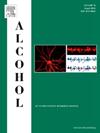酒精成瘾中痛觉过敏和过度兴奋交叉的概念框架
IF 2.9
4区 医学
Q3 PHARMACOLOGY & PHARMACY
引用次数: 0
摘要
酒精使用障碍是一种慢性复发性障碍,以强迫性药物寻求为特征,被认为是在成瘾的三个阶段循环(激励突出/病理习惯、戒断/负面影响和专注/预期)中由多种动机失调来源造成的。戒断/消极影响阶段的一个主要动机来源是戒断和长期戒断带来的身体痛苦和情感痛苦,它们通过负强化过程驱动明显的药物寻求行为。负强化的概念被定义为通过饮酒来减轻过度饮酒后戒酒所造成的身体和情感上的痛苦(过度饮酒)。过度抑郁(源自希腊语“katifeia”,意为沮丧或消极情绪状态)被定义为消极情绪或动机体征和戒断药物或成瘾症状的强度增加。在人类和动物模型中,反复滥用酒精会导致痛觉过敏和过度兴奋,并在酒精戒断期间表现为奖励阈值升高、疼痛阈值降低以及焦虑和烦躁样反应。据推测,这些症状源于奖赏系统和大脑应激系统(如促肾上腺皮质激素释放因子、促啡肽、去甲肾上腺素、下丘脑泌素、加压素、糖皮质激素和神经免疫因子)以及大脑抗应激系统(如神经肽Y、内源性大麻素和催产素)内的分子和神经回路神经适应。因此,我们的假设是,酒精戒断引起的痛觉过敏和亢进持续到长期戒断,并有助于强迫性酒精寻求的发展和持续。在灾难化、焦虑、消极紧迫性和期望(CANUE)模型中,阐述了成瘾中身体和情感疼痛交叉的概念框架,并且介导情绪疼痛和身体疼痛的大脑回路的显著重叠涉及扩展的杏仁核。情绪和身体疼痛的交叉甚至更显著地强化了负强化在酒精成瘾中的作用,并符合适应负荷(定义为随变化的稳定性)的框架,而其他适应负荷(定义为打破身体内稳态的代价),如遗传学/表观遗传学,童年创伤和其他压力源,加剧了导致酒精使用障碍的痛觉过敏/过度兴奋。关注治疗与急性和长期戒断相关的痛觉过敏/过度兴奋,为理解酒精使用障碍的病因开辟了新的和令人兴奋的途径。本文章由计算机程序翻译,如有差异,请以英文原文为准。
A conceptual framework for the intersection of hyperalgesia and hyperkatifeia in alcohol addiction
Alcohol use disorder is a chronically relapsing disorder that is characterized by compulsive drug seeking and is hypothesized to result from multiple sources of motivational dysregulation in a three-stage cycle of addiction (incentive salience/pathological habits, withdrawal/negative affect, and preoccupation/anticipation). One major source of motivation in the withdrawal/negative affect stage is the physical pain and emotional pain of withdrawal and protracted withdrawal that drive pronounced drug-seeking behavior via the process of negative reinforcement. The construct of negative reinforcement is defined as alcohol taking to alleviate both physical pain and emotional pain (hyperkatifeia) that are created by alcohol abstinence following excessive alcohol consumption. Hyperkatifeia (derived from the Greek “katifeia” for dejection or negative emotional state) is defined as an increase in intensity of the constellation of negative emotional or motivational signs and symptoms of withdrawal from drugs of addiction. In humans and animal models, the repeated misuse of alcohol results in hyperalgesia and hyperkatifeia and is reflected by elevations of reward thresholds, lower pain thresholds, and anxiety- and dysphoric-like responses during alcohol withdrawal. Such symptoms are hypothesized to derive from molecular and neurocircuitry neuroadaptations within the reward system and brain stress systems (e.g., corticotropin-releasing factor, dynorphin, norepinephrine, hypocretin, vasopressin, glucocorticoids, and neuroimmune factors) and brain anti-stress systems (e.g., neuropeptide Y, endocannabinoids, and oxytocin) in the extended amygdala. Thus, our hypothesis is that alcohol withdrawal-induced hyperalgesia and hyperkatifeia persist into protracted withdrawal and contribute to the development and persistence of compulsive alcohol seeking. A conceptual framework for the intersection of physical and emotional pain in addiction is elaborated in the Catastrophizing, Anxiety, Negative Urgency, and Expectancy (CANUE) model, and a significant overlap of brain circuits that mediate emotional pain and physical pain involves the extended amygdala. The intersection of emotional and physical pain reinforces even more dramatically the role of negative reinforcement in alcohol addiction and fits a framework of allostasis (defined as stability with change) where other allostatic loads (defined as the cost of breaks with homeostasis on the body), such as genetics/epigenetics, childhood trauma, and other stressors, exacerbate hyperalgesia/hyperkatifeia in driving alcohol use disorder. The focus on treating hyperalgesia/hyperkatifeia that is associated with acute and protracted withdrawal opens new and exciting avenues for understanding the etiology of alcohol use disorder.
求助全文
通过发布文献求助,成功后即可免费获取论文全文。
去求助
来源期刊

Alcohol
医学-毒理学
CiteScore
4.60
自引率
4.30%
发文量
74
审稿时长
15.6 weeks
期刊介绍:
Alcohol is an international, peer-reviewed journal that is devoted to publishing multi-disciplinary biomedical research on all aspects of the actions or effects of alcohol on the nervous system or on other organ systems. Emphasis is given to studies into the causes and consequences of alcohol abuse and alcoholism, and biomedical aspects of diagnosis, etiology, treatment or prevention of alcohol-related health effects.
Intended for both research scientists and practicing clinicians, the journal publishes original research on the neurobiological, neurobehavioral, and pathophysiological processes associated with alcohol drinking, alcohol abuse, alcohol-seeking behavior, tolerance, dependence, withdrawal, protracted abstinence, and relapse. In addition, the journal reports studies on the effects alcohol on brain mechanisms of neuroplasticity over the life span, biological factors associated with adolescent alcohol abuse, pharmacotherapeutic strategies in the treatment of alcoholism, biological and biochemical markers of alcohol abuse and alcoholism, pathological effects of uncontrolled drinking, biomedical and molecular factors in the effects on liver, immune system, and other organ systems, and biomedical aspects of fetal alcohol spectrum disorder including mechanisms of damage, diagnosis and early detection, treatment, and prevention. Articles are published from all levels of biomedical inquiry, including the following: molecular and cellular studies of alcohol''s actions in vitro and in vivo; animal model studies of genetic, pharmacological, behavioral, developmental or pathophysiological aspects of alcohol; human studies of genetic, behavioral, cognitive, neuroimaging, or pathological aspects of alcohol drinking; clinical studies of diagnosis (including dual diagnosis), treatment, prevention, and epidemiology. The journal will publish 9 issues per year; the accepted abbreviation for Alcohol for bibliographic citation is Alcohol.
 求助内容:
求助内容: 应助结果提醒方式:
应助结果提醒方式:


